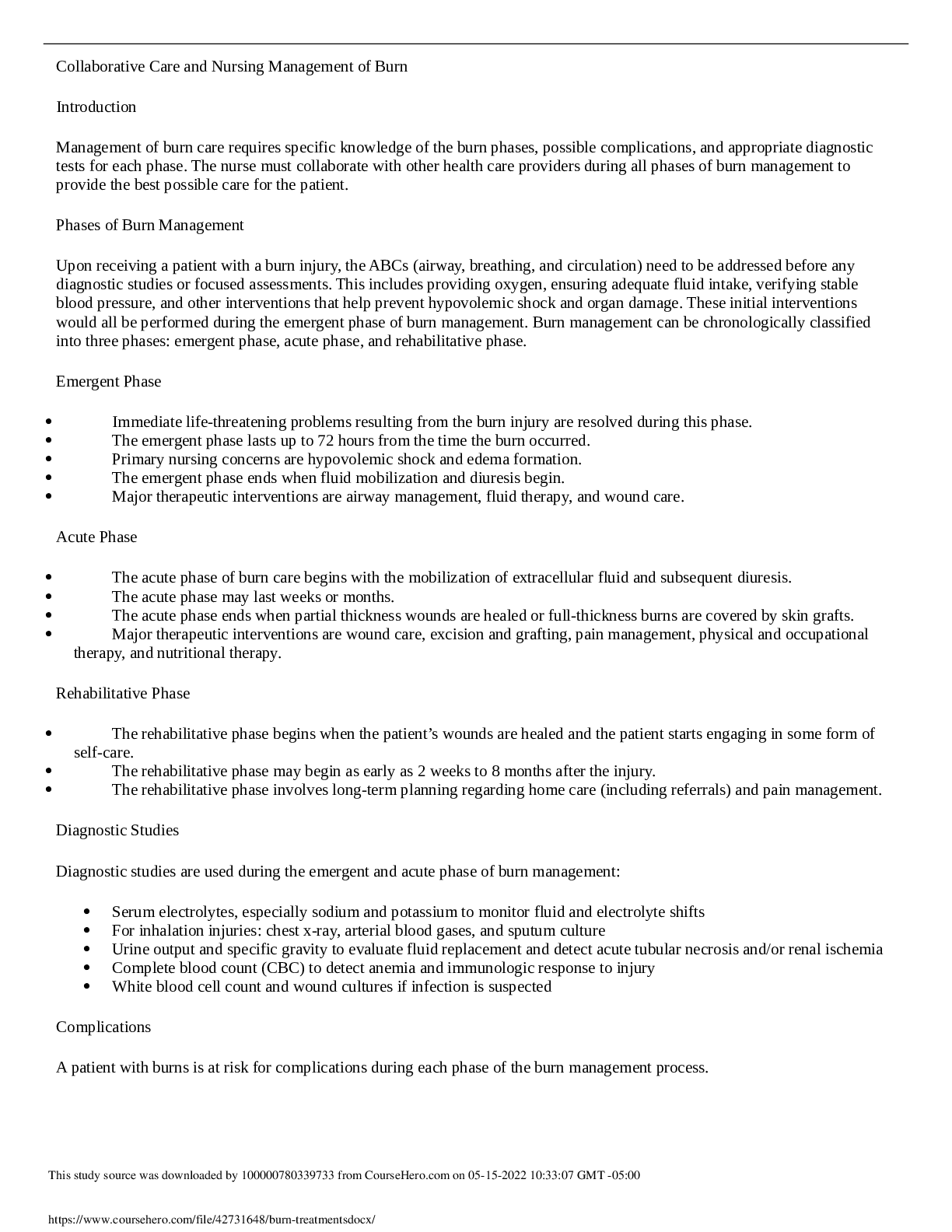Burn treatments - Collaborative Care and Nursing Management of Burn
Course
Music
Subject
Chemistry
Category
Study Notes
Pages
7
Uploaded By
ATIPROS
Preview 2 out of 7 Pages


Download all 7 pages for $ 6.00
Reviews (0)
$6.00
